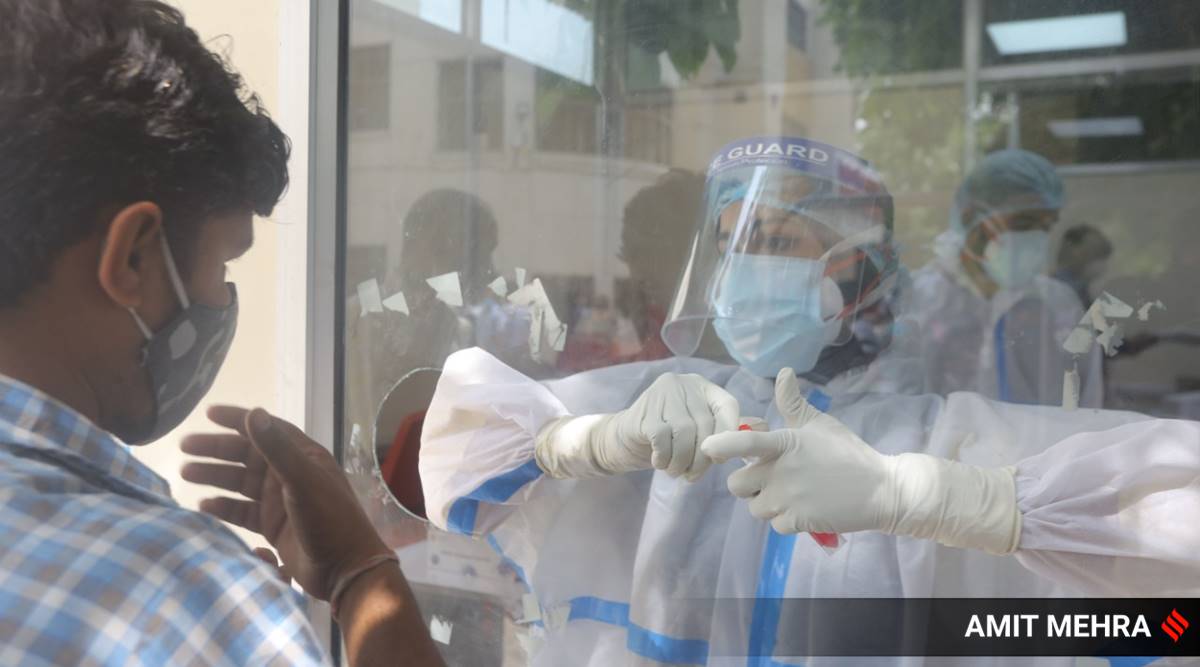ManuAmrohi
Saturday, May 29, 2021
Saturday, April 17, 2021
latest Covid-19 news
Coronavirus India Live Updates: Global death toll nears 3 million
Coronavirus (Covid-19) India Lockdown News Live Updates: There are now 16,79,740 active cases while 1,26,71,220 people have recovered from the disease.
 Covid-19 testing at Chacha Nehru Bal Chikitsalaya on Friday in New Delhi. (Express Photo By Amit Mehra)
Covid-19 testing at Chacha Nehru Bal Chikitsalaya on Friday in New Delhi. (Express Photo By Amit Mehra)Coronavirus India Live Updates: Amid a steep rise in coronavirus cases, the Congress’ top brass met virtually on Saturday and began deliberations on the steps needed to deal with the Covid-19 situation in the country.
The Congress Working Committee (CWC) meeting, chaired by Congress president Sonia Gandhi, was attended by former party chief Rahul Gandhi, general secretaries, other permanent invitees and state in-charges of the party. The CWC is discussing the current Covid-19 situation in the country and steps that need to be taken urgently to check the further spread of the virus.
India on Saturday reported 2,34,692 new Covid-19 cases and 1,341 deaths in the last 24 hours, according to data from the Union Health Ministry. The total cases in the country now stand at 1,45,26,609. There are now 16,79,740 active cases while 1,26,71,220 people have recovered from the disease. The overall death toll has reached 1,75,649. As many as 11,99,37,641 people have been vaccinated so far.
Meanwhile, the world’s Covid-19 death toll is approaching another grim milestone — nearly three million people have died from the virus since the first cases surfaced more than 14 months ago. The global death toll stands at 2,990,993, while the number of confirmed coronavirus cases has surged to nearly 140 million, according to a New York Times database, as countries race to provide enough vaccines to slow the relentless pace of infections. The pace of deaths has been accelerating. The world did not record one million deaths until Sept. 28, but had recorded two million by Feb. 21, less than five months later. And the latest million took less than two months. The United States, Brazil and Mexico lead the world in Covid-19 deaths.
Friday, March 26, 2021
Saturday, March 6, 2021
Saturday, February 27, 2021
HOW TO INSERT VALUES IN MS ACESS TABLE .
Friday, February 26, 2021
CRETE TABLE IN MS ACCESS
latest science news
-
SOME INTRESTING FACT'S
-
How do search engines work? Search engines work by taking a list of known URLs, which then go to the scheduler . The scheduler decides wh...
-
Did Y OU Know? The Eiffel Tower was built by GUSTAVE EIFFEL for the 1889 exposition universelle to celebrate the centennial anniversary of...




